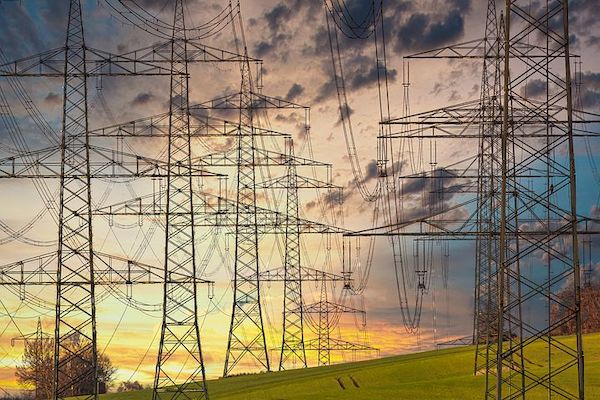Supporting the Global Transition to Renewable Energy with Automated Demand Response
Policymakers worldwide are committing to achieving 100 percent NetZero clean energy deployment by 2050 to avoid a global temperature rise of 1.5 °C. To meet this goal, there is an inherent need to expedite the transition to renewable, low emission energy sources through all means necessary. In recent years, environmental concerns and cost reduction tactics have catalyzed the clean energy sector’s rapid growth and acted as key drivers in the swift deployment of sustainable power generation.
Burning fossil fuel has been the most commonly used, cost-effective method for generating electricity and heat for most of human history but its negative and lasting environmental implications are proven, vast and increasingly palpable. The United Nations reports that fossil fuels currently account for over 75 percent of global greenhouse gas emissions while the World Health Organization’s COP24 Special Report indicates that the air pollution it creates has contributed to $2.9 trillion in health and economic-related costs.

As ambitious and complex as it may be, a global reduction of CO2 emitting resources and the shift towards 100 percent clean energy is imperative to decarbonizing the power sector and creating a sustainable future for our planet and society. As renewable energy costs have decreased and been utilized at scale, we’ve seen a shift in utility’s power generation mix, which has not only altered power provider’s approach to balancing energy supply and loads but also requires significant technological advancements in order to manage the grid’s stability, feasibility and emission profiles. It is estimated that nearly half the technologies needed to achieve NetZero by 2050 are in prototype phases, which means the other half are ready for deployment right now. One such tool is Automated Demand Response (Auto-DR).
Auto-DR Supports Sustainable Energy Conservation
As the demand for electricity increases, utility providers must generate and distribute more power, or alternatively, reduce energy consumption to prevent supply and demand issues—which is where Auto-DR comes into play. In its most basic form, Auto-DR serves as an energy management program offered by energy providers to incentivize energy conservation when the power supply is low.
Auto-DR is an opt-in program where energy users are compensated by utilities for minimizing power consumption during peak demand periods to avoid grid strain. Users can automatically curtail energy deployment when the grid is under duress and play a significant role in balancing power supply and demand while still maintaining their business operations. For example, a supermarket with an integrated Auto-Dr program can seamlessly reduce specified energy loads for a few hours without impacting food quality or customer comfort. When multiple buildings participate in an event at the same time, the combined energy reduction significantly contributes to stabilizing the grid and preventing blackouts.
In today’s market, there are many advanced Auto-DR programs available that allow for easy integration and cost-free participation across multiple industries. Modern Auto-DR programs enable users to deploy intelligent automation, connected through building control and power management systems, to curb energy loads, making it a cost-effective, flexible and easily implemented way to drive energy conservation. In effect, each participating facility becomes part of a distributed virtual power plant that providers leverage to offset energy supply and demand.
Auto-DR can also be applied by utilities to balance wind and solar production. If the power generated is less than expected, providers can trigger an Auto-DR event to help match the supply and demand to enable greater renewable energy penetration into the system. Customers maintain control of the event settings by determining when and how energy usage is curbed based on their operational needs, and in turn, support grid stability and gain access to financial compensation from their power provider.

Auto-DR’s Role in Creating a NetZero Future
Beyond stabilizing the grid, Auto-DR enables commercial and industrial businesses to minimize their greenhouse gas emissions and improve their bottom line—making it a win-win. Once a building’s energy loads are connected, users receive signals and have the ability to set triggers that automate the reduction of energy consumption when majority of the grid’s power is generated from non-renewables like gas or coal. These advanced Auto-DR offerings provide a seamless way to help curb fossil fuel usage and monitor the real-time carbon makeup of the grid. When CO2/MWh are high, the right Auto-Dr system can match clients’ flexible loads with intelligent automation, allowing them to avoid carbon-intensive energy use based on their own customized specifications.
For organizations, Auto-DR is an effective power reducer that can be leveraged to achieve internal and external regulatory compliance while also aiding in ESG initiatives by decreasing its carbon footprint. For example, a big box retailer or large grocery store that could curtail roughly 30 kW of HVAC or refrigeration load across 120 stores, 40 hours per year, would have avoided over 110,000 pounds for CO2 emissions, which equates to 21 cars off the road annually. In an age of highly conscious consumers that base much of their purchasing decisions on how an organization invests or supports environmental causes, customers expect a significant level of corporate responsibility and commitment to acting as environmental and community stewards. Auto-DR allows companies to meet and exceed customer expectations by seamlessly enabling greener and more environmentally sustainable business operations.
With Auto-DR, We Are One Step Closer to Reaching Future Global Renewable Energy Goals
Preserving finite resources and the planet for ourselves and for generations to come is something we have the ability to address and act on right now. The grid’s transition to lowering carbon emissions and deploying cleaner energy alternatives is a massive undertaking that requires innovation, critical changes in consumption and a continual shift in how we utilize available technology. The simple and immediate implementation of Auto-DR not only supports this through energy conservation but will also play a vital role in global decarbonization, eliminating fossil fuels and establishing a NetZero future in the transition towards a cleaner, more sustainable grid.
James Muraca serves as the Chief Technology Officer for Enersponse, an energy conservation management firm and Auto-DR platform provider than enables businesses across the U.S. maximize financial savings, preserve energy, increase power reliability and resilience and improve their environmental footprints and bottom lines.
Enersponse | https://www.enersponse.com/
Author: James Muraca







